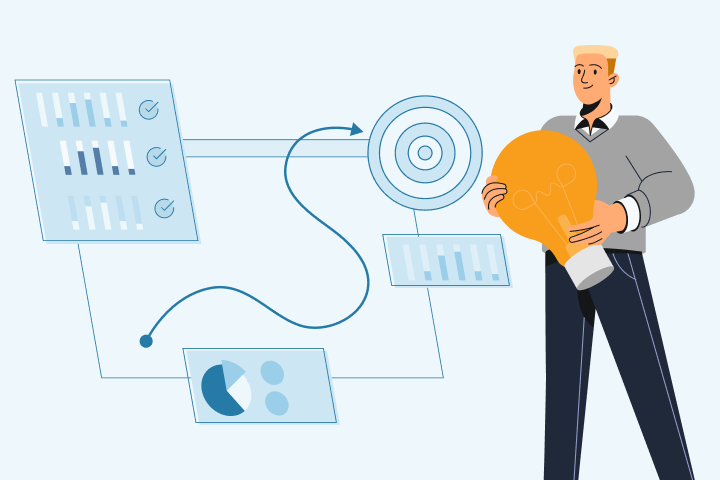It's easier to sell more of a product when people know, like, and trust your brand.
Brand awareness marketing is the bridge that helps you achieve familiarity among your ideal audience, and it can serve as a defensible moat that consistently generates inbound leads and improves customer retention and loyalty.
However, brand awareness is often a rather vague topic as it's not a straightforward marketing campaign with a direct return on investment (ROI).
For example, you can't track the impact of brand awareness campaigns that sparked critical conversations on dark social. In addition, brand awareness is a long-term play and the impact of your efforts for many years.
Despite the challenges associated with brand awareness, it's no secret that companies like Nike, who have mastered brand awareness, have a significant advantage in the marketplace.
In this post, we'll discuss everything you need to know about brand awareness marketing, from implementing a strategy and measuring campaign success to exploring specific examples and actionable takeaways.
What Is Brand Awareness Marketing?
Brand awareness marketing is a strategy marketers use to increase the total number of ideal prospects who know and trust your brand.
There are three different variables within that goal:
-
Quantity: How many people know about your brand.
-
Quality: What type of people does it reach (ideal prospects vs. random people).
-
Depth: How well they know your brand (heard the name vs. loyal, raving fan).
Below we'll discuss brand awareness marketing in detail, from improving your current strategy to specific examples of brands with excellent awareness marketing strategies.
The Importance of Brand Awareness and Its Benefits
If you're looking for CRM software, HubSpot or Salesforce probably come to mind because you've seen them and have probably heard plenty of people talk (positively) about them.
These two brands have an automatic advantage over their competitors because many prospects that need a CRM will simply search for those brand names and sign up without even considering other solutions.
In fact, the term "Salesforce" receives about four times as many monthly searches as the term "CRM."

So, how can you become a name that potential customers know and trust before they're ready to buy?
The answer is to implement a sustainable brand awareness marketing strategy.
Brand Awareness Marketing Strategy
A common misconception is that your brand has to have a multi-million dollar marketing budget like Salesforce to incorporate a brand awareness marketing strategy.
Fortunately, this isn't true.
If you have a small marketing budget, target only ideal customers ready to buy. As your company (and budget) grows, you can expand your strategy to a broader audience.
We have another dedicated resource for building a brand awareness marketing strategy, but here's a general overview.
Start by setting realistic goals for your brand awareness marketing strategy.
The key term in that sentence is "realistic." Rather than pulling an arbitrary industry benchmark as your goal, look at your current growth rate and set a goal of increasing your current growth rate by 10-20%. Some of the metrics you can track include:
- Brand impressions (social media).
- Brand name queries.
- Website traffic.
- Brand mentions.
Next, map out your funnel and select just a few repeatable marketing strategies for each stage of your funnel. Here are a few marketing strategies you can consider at each stage of your funnel:
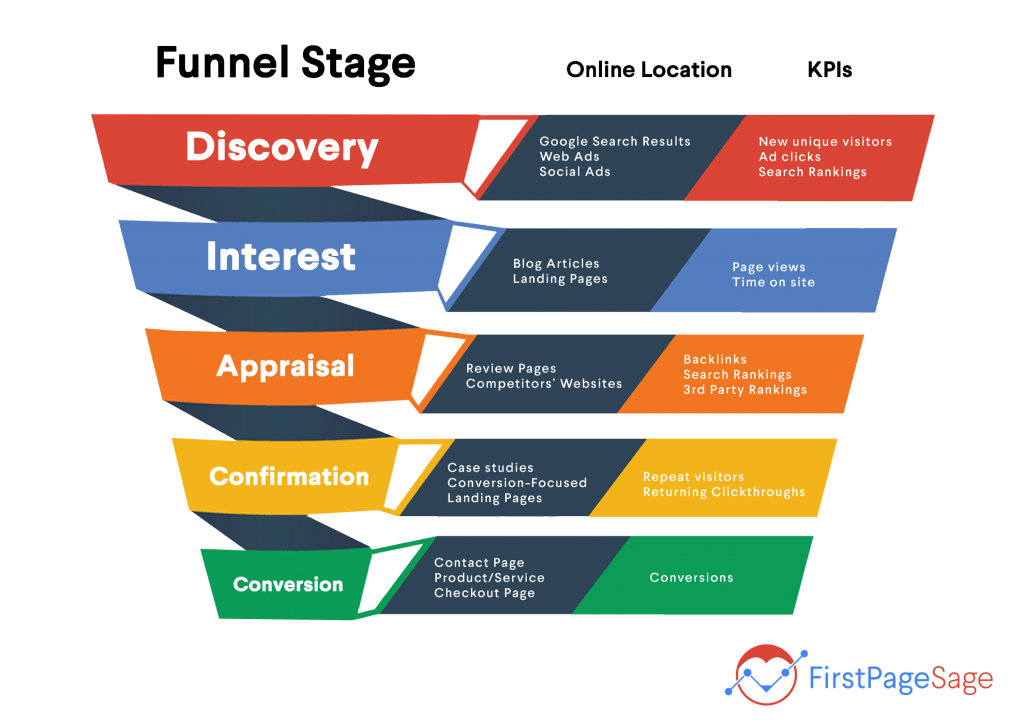
Source: First Page Sage
While most people assume that brand awareness is only relevant to top-of-the-funnel (TOFU) content, we believe that it's important to consider the entire marketing funnel as your brand awareness efforts at the TOFU level won't produce an ROI if those visitors never move to the next stage of your funnel.
In addition, brand awareness is about more than just increasing the quantity of people who know about your brand. A great brand awareness strategy also aims to deepen the prospect's loyalty to your brand.
Therefore, include middle-of-the-funnel (MOFU) and bottom-of-the-funnel (BOFU) content in your brand awareness marketing strategy.
Now that you've mapped out your marketing funnel and the marketing strategies you'll use at each stage of the funnel, create a repeatable workflow to ensure your team executes consistently.
A critical mistake many marketers make when building a brand awareness strategy is executing a random collection of different marketing tactics and hoping one works. By creating a sustainable workflow and assigning each team member a specific task, you'll be able to execute consistently and therefore identify patterns within the data.
This will allow you to identify patterns in your data to double down on what is and isn't working.
Once you identify the top-performing strategies, double down on them and continue testing and improving.
If you want a more detailed step-by-step guide to executing a successful brand awareness program, consider reading our guide to building a brand awareness marketing strategy.
How To Increase Brand Awareness
Creating a brand awareness marketing strategy is essential to ensure you execute consistently. Once you've built a strong foundation, you can explore different methods to amplify your content.
So, rather than producing more content or adding more marketing channels to your funnel, the following amplification strategies lay on top of your existing workflow and maximize the ROI of your existing marketing efforts.
Implement Employee Advocacy
Arguably the easiest and most effective method to quickly generate more engagement for your existing content is implementing an employee advocacy program.
The concept of employee advocacy is relatively simple.
Your employees share brand messages with their audiences (typically on social media platforms). They can do this by engaging with content published by the brand or a fellow co-worker. They could also create their own content regarding brand initiatives.
The content they publish or engage with can range from new job openings and product launches to company culture and co-worker shout-out posts.
Here's a great example of employee advocacy where the employee highlights the positive aspects of their company's culture:
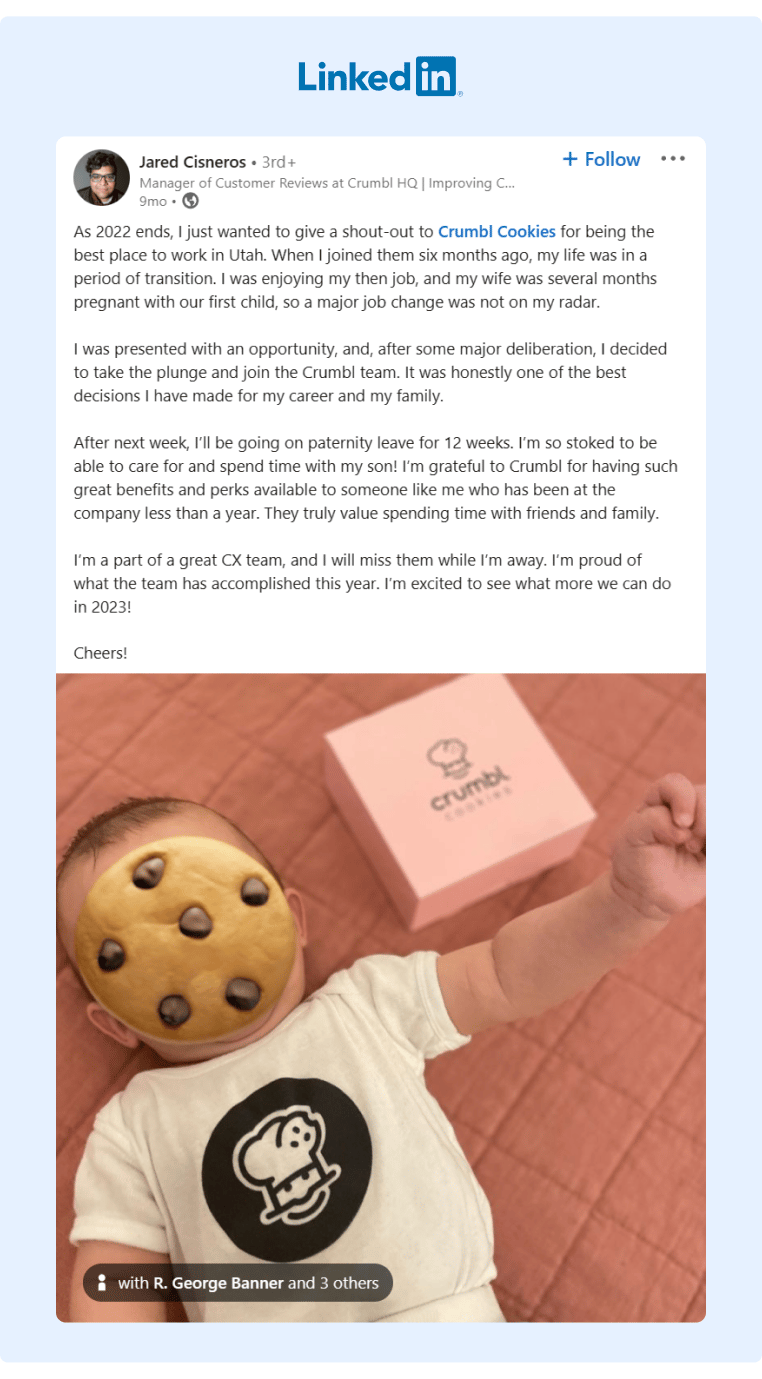
Source: Jared Cisneros
Here’s another example of employee advocacy where the employee shared a branded post and also pitched that they’re hiring:
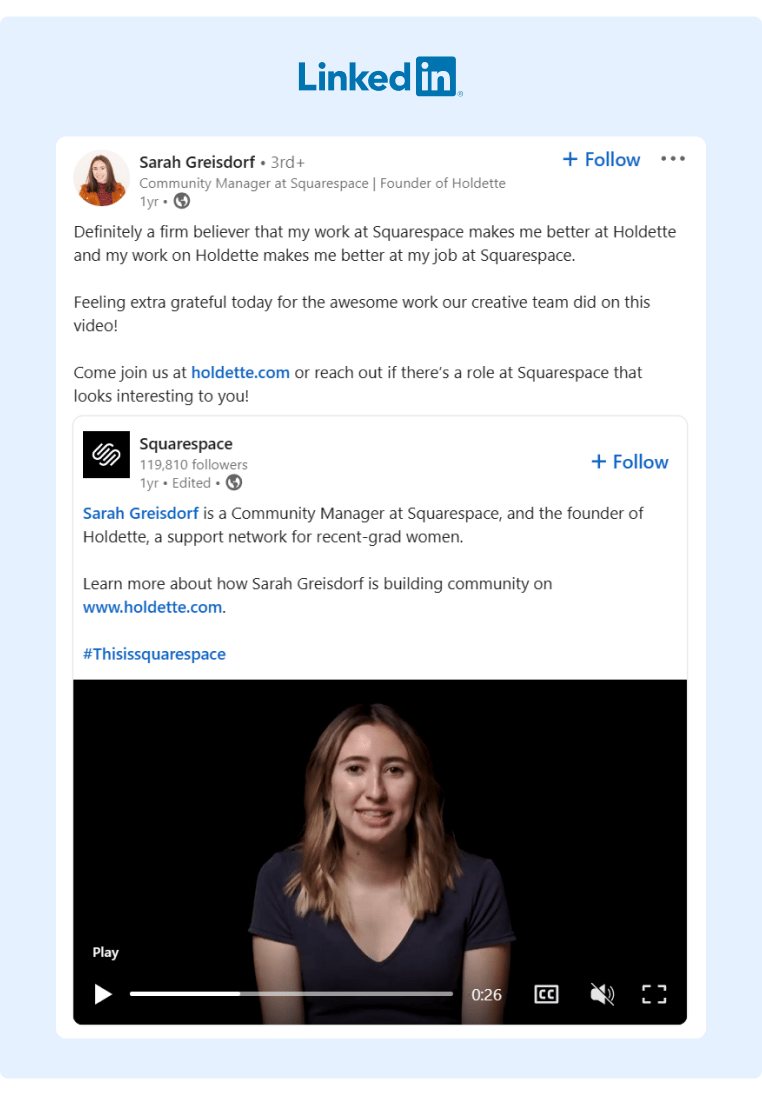
Source: Sarah Greisdorf
As you can see, this is an easy strategy to maximize your brand awareness efforts without applying significantly more resources to earn the reach.
The only challenge with employee advocacy is that it can be difficult to keep employees engaged for an extended period of time.
It's time-consuming for employees to engage if they have to select a piece of content and think of something insightful to say. In addition, many simply forget to engage with your content.
We built GaggleAMP, an employee advocacy platform, to solve these challenges. It allows you to assign specific engagement activities to employees at scale and then track their engagement.
In fact, you can even use the AI-powered writing tool to create the content for them so that all they have to do is approve/edit the content and schedule it for publishing.

By removing the friction associated with posting content, GaggleAMP makes it easy to sustain high employee engagement.
You can learn more about how GaggleAMP works by scheduling a demo today.
Content Promotion Collaborations
Partnering with other influencers in your industry is a great way to reach more people for minimal additional effort.
For example, if you have a newsletter, you can partner with an industry influencer or parallel brand to promote their content to your audience. In exchange, ask them to promote your content to their audience.
Another option is to ask an industry influencer to share a piece of content you recently published on their social media profile. In exchange, you can share one of their pieces of content on your branded social media page. Or, you can even offer to have an executive share it on their personal social media profile.
Here’s a great example of this in action:

Source: Rand Fishkin
Finally, you can always offer to do a content collaboration like a podcast or interview-style blog post. Most influencers are naturally more than happy to share collaborative content with their followers as they have also invested in creating that content.
Repurpose Content
Creating a noteworthy idea that resonates with your ideal audience is the most resource-intensive aspect of content creation. Once you've made that initial piece of content, you can use AI or a low-cost VA to repurpose it into multiple different pieces of content.
For example, if you started with a video, you can repurpose it into a podcast, video, or blog post.
Here's an excellent example of a smart content creator who combined the content collaboration tactic above with the repurposing tactic.
Specifically, he did a podcast interview with a marketing influencer and then repurposed it as several pieces of LinkedIn content:
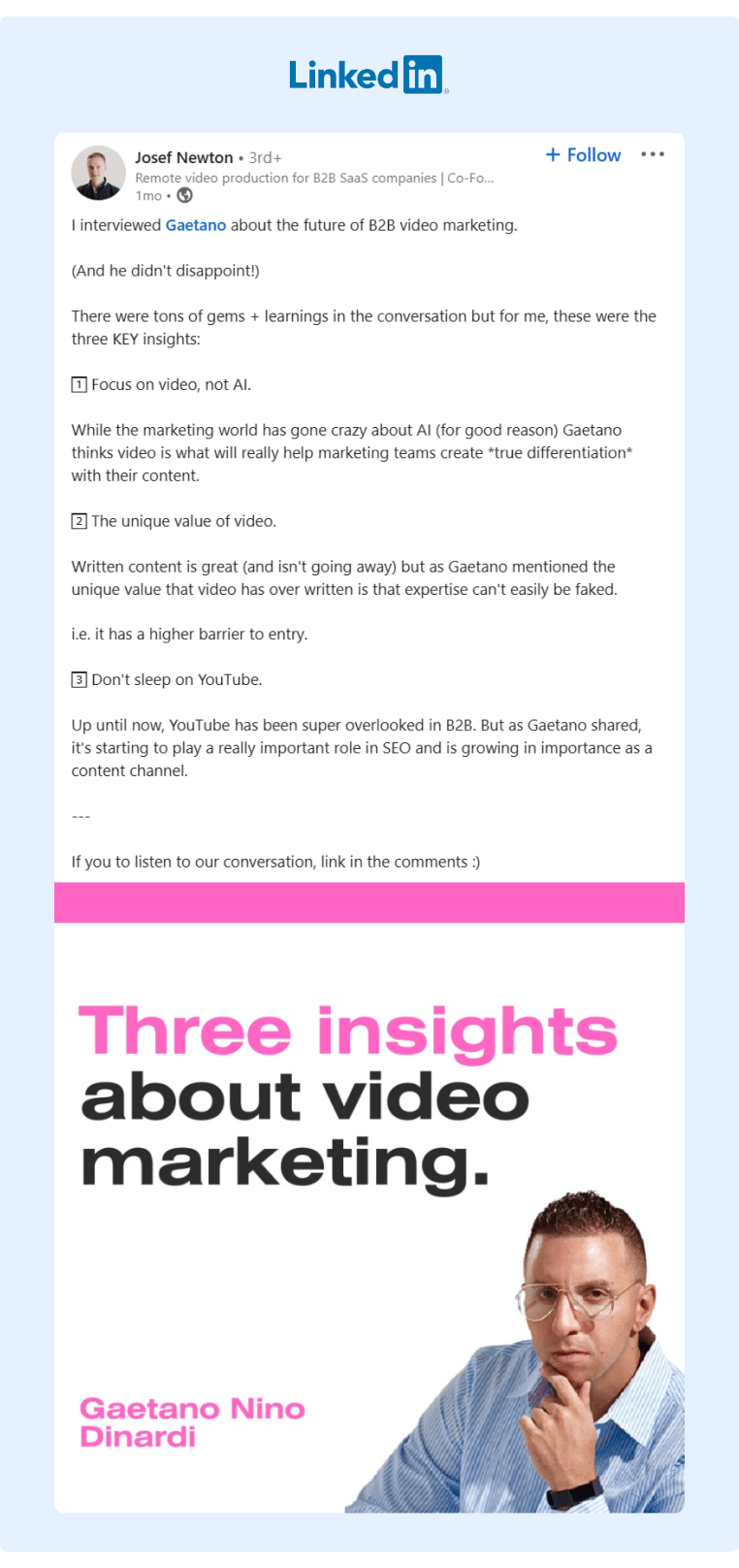
Source: Josef Newton
He also used both video and text-based formats to cater to both audiences that like video and text:
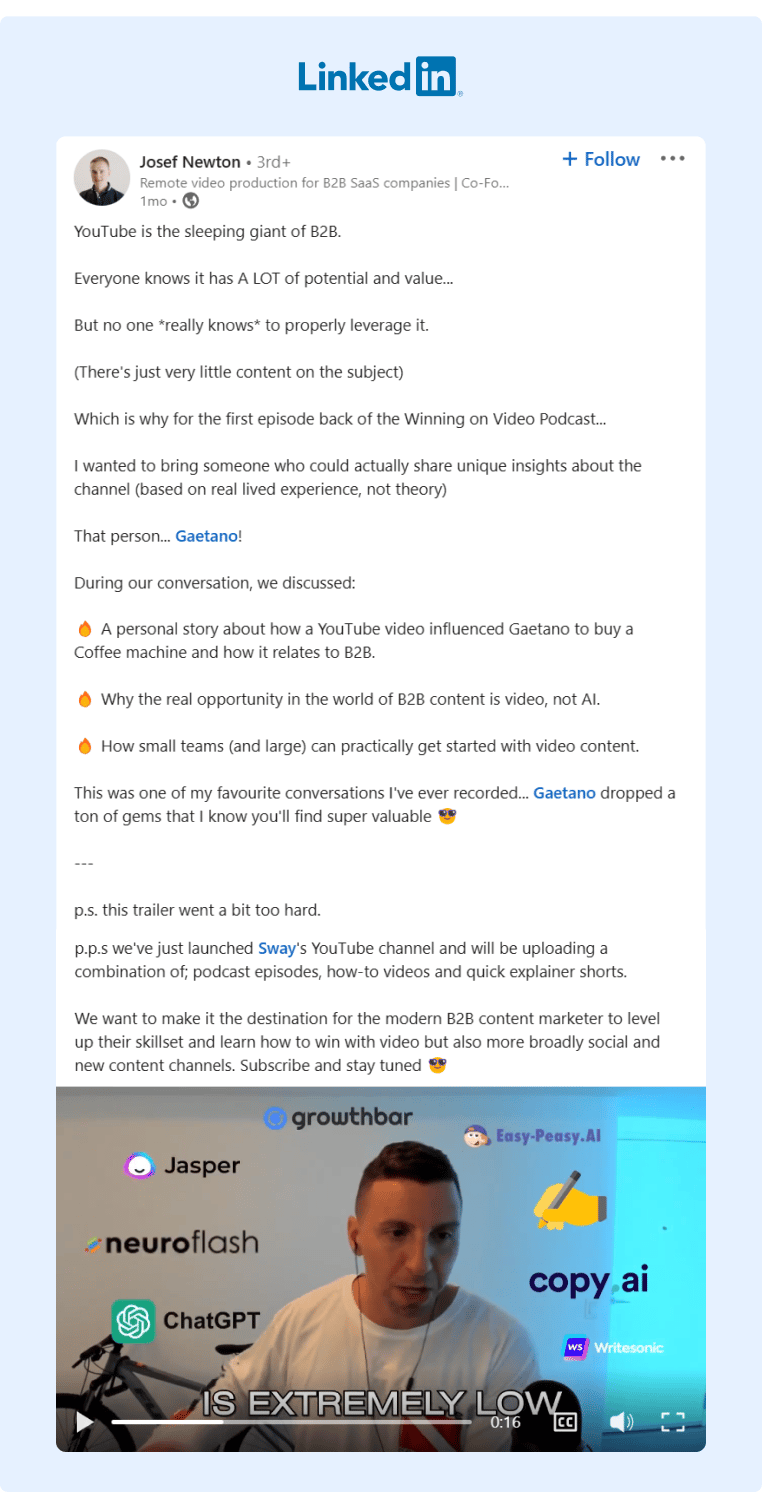
Source: Josef Newton
Repost Content
One of the easiest ways to maximize your content's reach is to repost it.
Only a small percentage of your followers see your initial content, and most people don't remember the content they've seen in the past.
Reposting your top-performing content from previous months or quarters is a great way to amplify reach with minimal additional resources.
You can update and adjust the content or simply repost it as is. The best part about this strategy is that you're posting proven content you already know resonates with your audience.
How To Measure Brand Awareness
Brand awareness is notoriously difficult to measure for a couple of different reasons:
-
The ROI of brand awareness isn't immediate. It usually takes years to produce results.
-
Most tracking metrics don't account for the impact of the interaction. (How much of a role did it play in moving the user through the customer journey?)
Nevertheless, it's important to track some metrics to improve your strategy and double down on the most effective aspects.
Here are a few brand campaign objectives you can measure to improve your strategy.
Brand Queries
A core aspect of the definition of brand awareness is the number of people who have heard of your brand. One of the best ways to measure this is by looking at how many monthly searches your brand receives.
You can use a tool like Ahrefs or Semrush to find this data. Ideally, you want to see it steadily trending upward month over month.
For example, you can see here that the search volume for "Nike" is steadily trending upward from about 1.2 million monthly searches in 2015 to roughly 2.6 million in 2023:
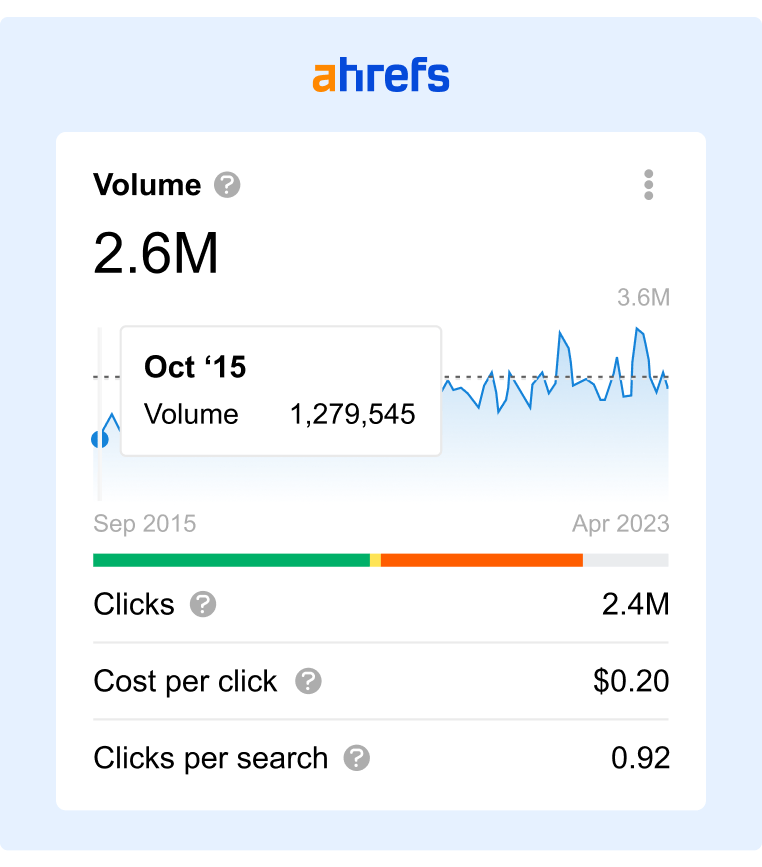
This is a good sign that their general branding strategy is working.
Backlinks
Another great way to track brand awareness is by checking how many other websites are linking to your website. If more websites are linking to you, it clearly means that more people are learning about your brand and find it valuable enough to send their website visitors to your website.
You can check the backlinks report in Ahrefs to get this data:
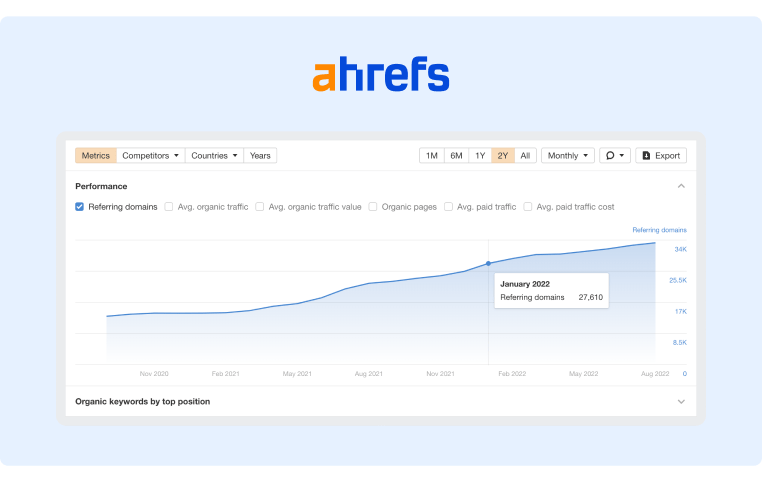
Brand Mentions
Similar to brand queries, brand mentions are also an excellent method to gauge how many people know about your brand. You can use a tool like Brandwatch or Brand24 to track brand mentions across the web and social media.
These tools also provide sentiment analysis to gauge the public's general opinion of your brand.
Social Media Engagement
Another great way to track your brand awareness marketing is to look at the quantity and quality of engagement on your social media posts.
To gauge your brand awareness marketing success, you can compare the average number of likes, comments, and shares a post received a year ago with the same metric today.
It's also important to look at who is engaging with your content. For example, is it your ideal target audience or people who will likely never purchase your product or service?
Surveys
Finally, you can simply ask customers how they discovered your brand. Many will tell you it was through a friend or an ad they saw but didn't click.
This can help you discover brand mentions that occurred on dark social to better understand the impact of your brand awareness efforts.
Brand Awareness Marketing Examples
Here are a few of the best examples of brand awareness marketing.
Example #1: Leverage Employee Advocacy
Imagine having a partner team that pays to promote your brand for you!
People tend to trust recommendations from third-party sources more than content from the brand itself. Here are some great examples from Figure, an AI robotics company:
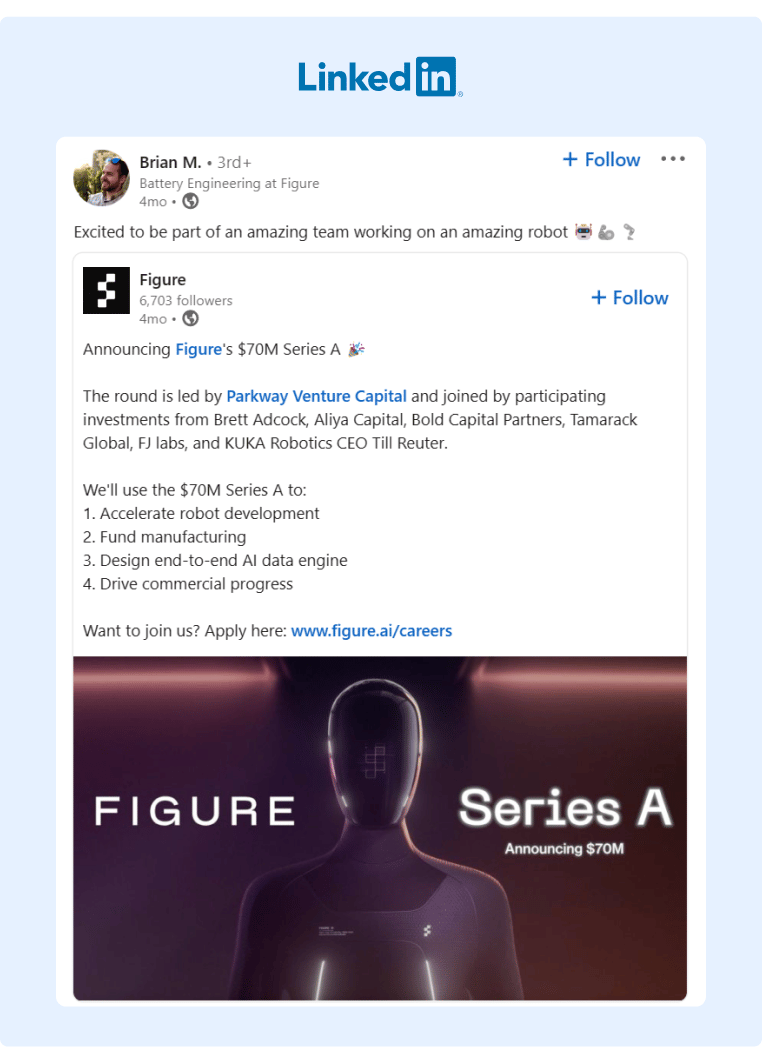
Source: Brian M.
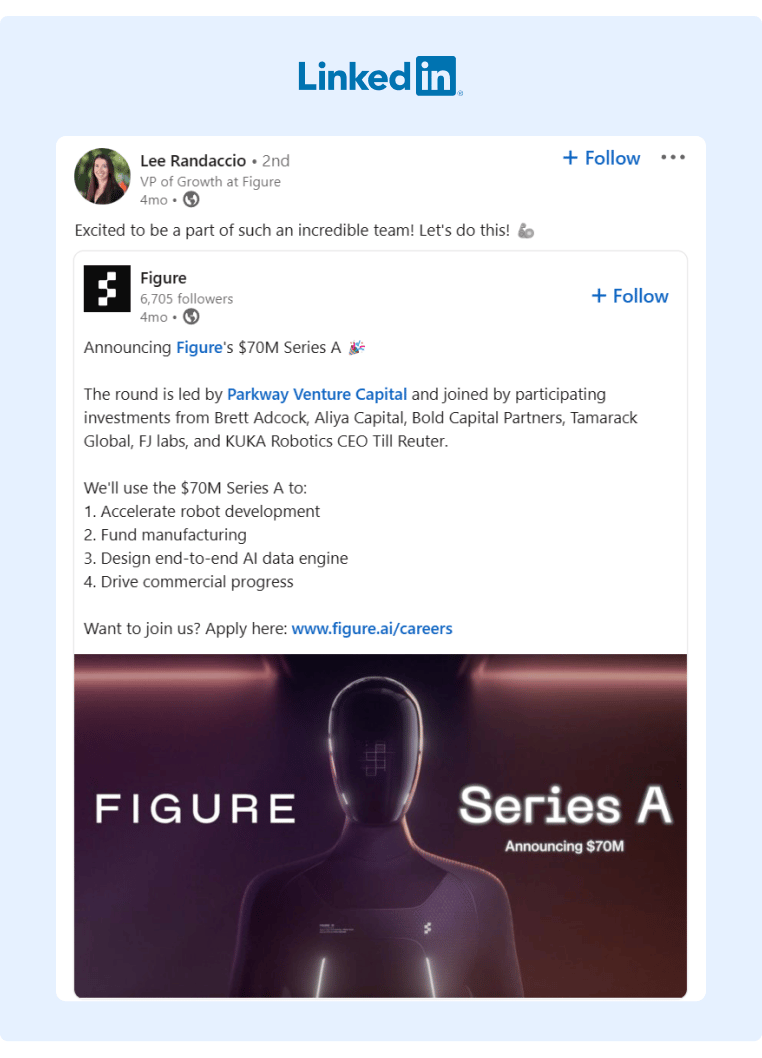
Source: Lee Randaccio
In addition, their CEO Brett Adcock regularly posts about product updates on social media. His team consistently engages with his content as well:
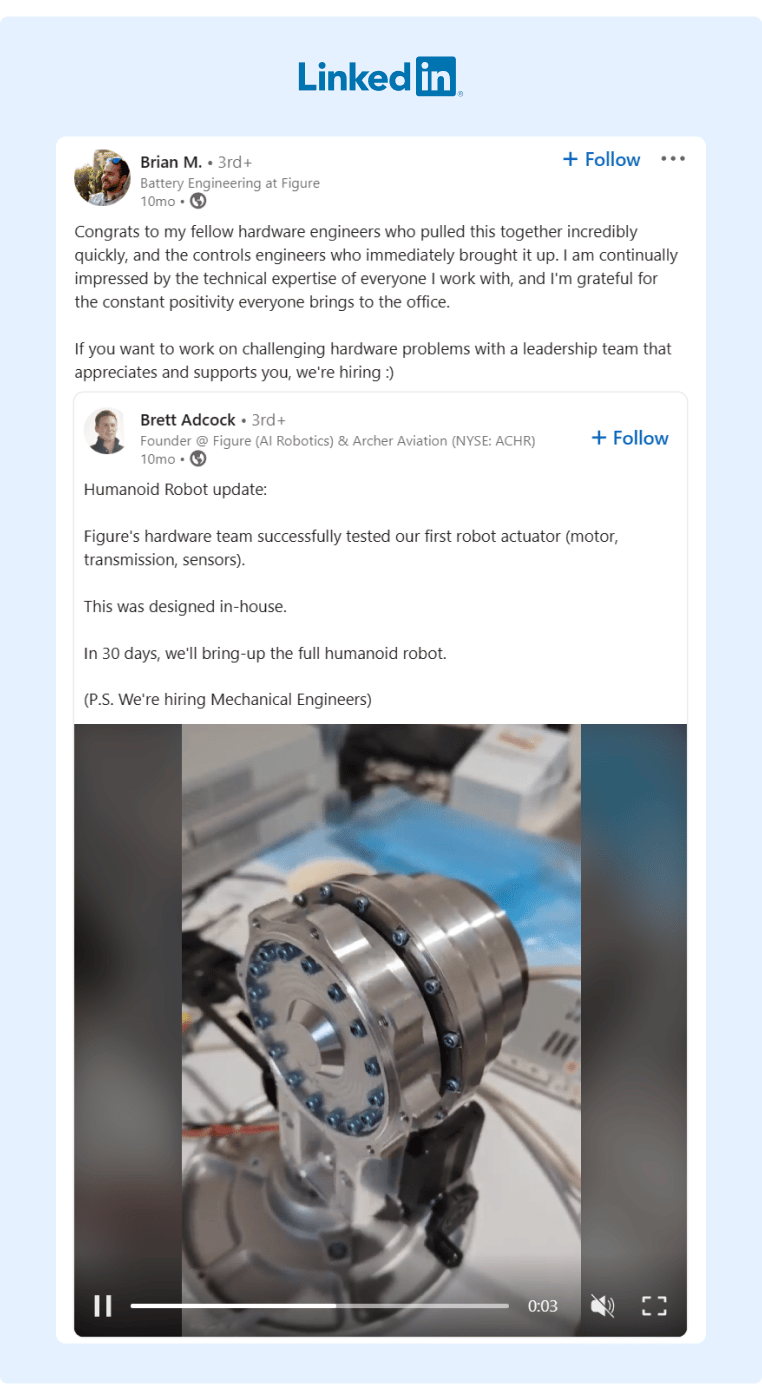
Source: Brian M.
Employees also regularly create their own social media posts promoting important company messages, like this one:

Source: Basel Zohny
The key to a successful employee advocacy campaign is consistency. Unfortunately, keeping employees engaged for an extended period of time is challenging as they often get busy and forget.
We built GaggleAMP to solve this problem and make it easy for you to provide specific engagement activities to employees at scale. You can even use AI-powered paraphrasing to create content that your employees can approve and publish to their personal social media profiles.
You can learn more about how GaggleAMP works by exploring its features or sign up for a demo today.
Example #2: Become a Data Partner
Partnering with influencers is a great way to generate more brand awareness, but the reality is that it can be challenging to get a major B2B influencer to partner with your brand.
One excellent method to entice an influencer to promote your brand is to offer to be a data partner for them. Influencers are always looking for new data-driven content as it helps them better serve their audience.
However, instead of waiting for an influencer to reach out to you for data, actively reach out to them with a pitch. For example, the survey tool QuestionPro partnered with B2B influencer Andy Crestodina for a study on Facebook spam.
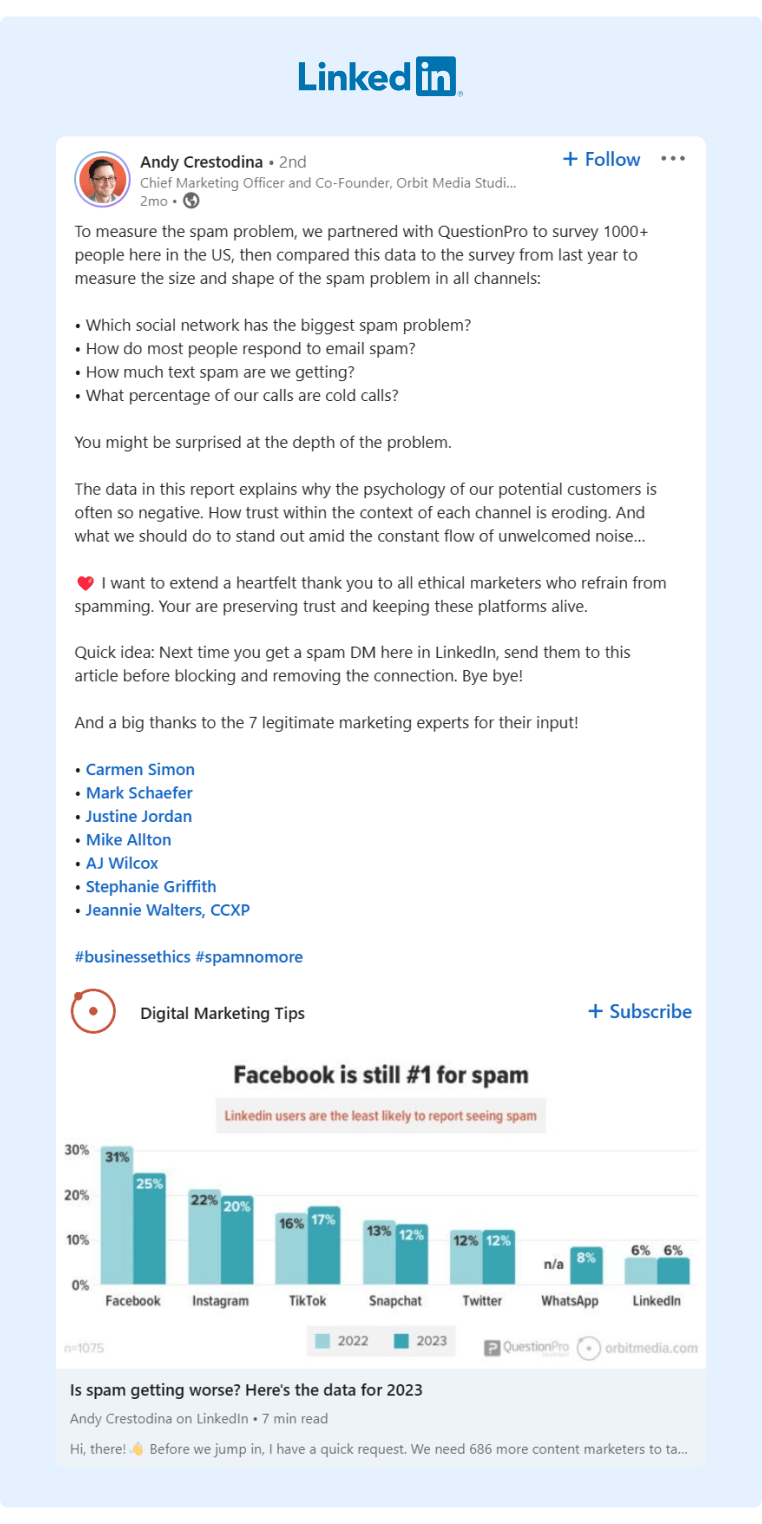
Source: Andy Crestodina
The initial post generated significant engagement, and then several others created content referencing the post and QuestionPro.
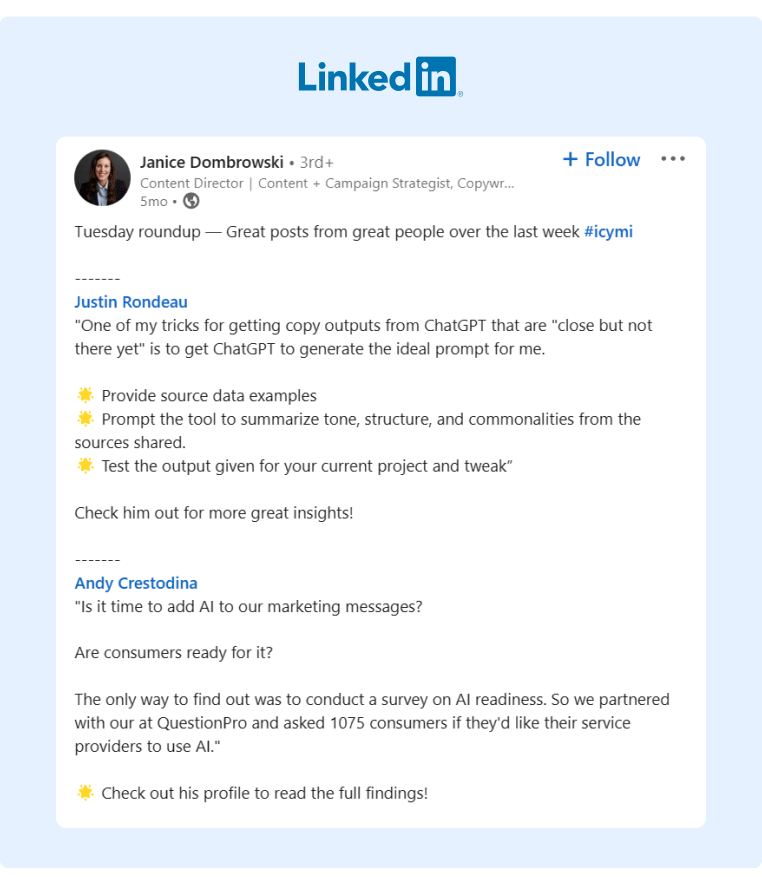
Source: Janice Dombrowski
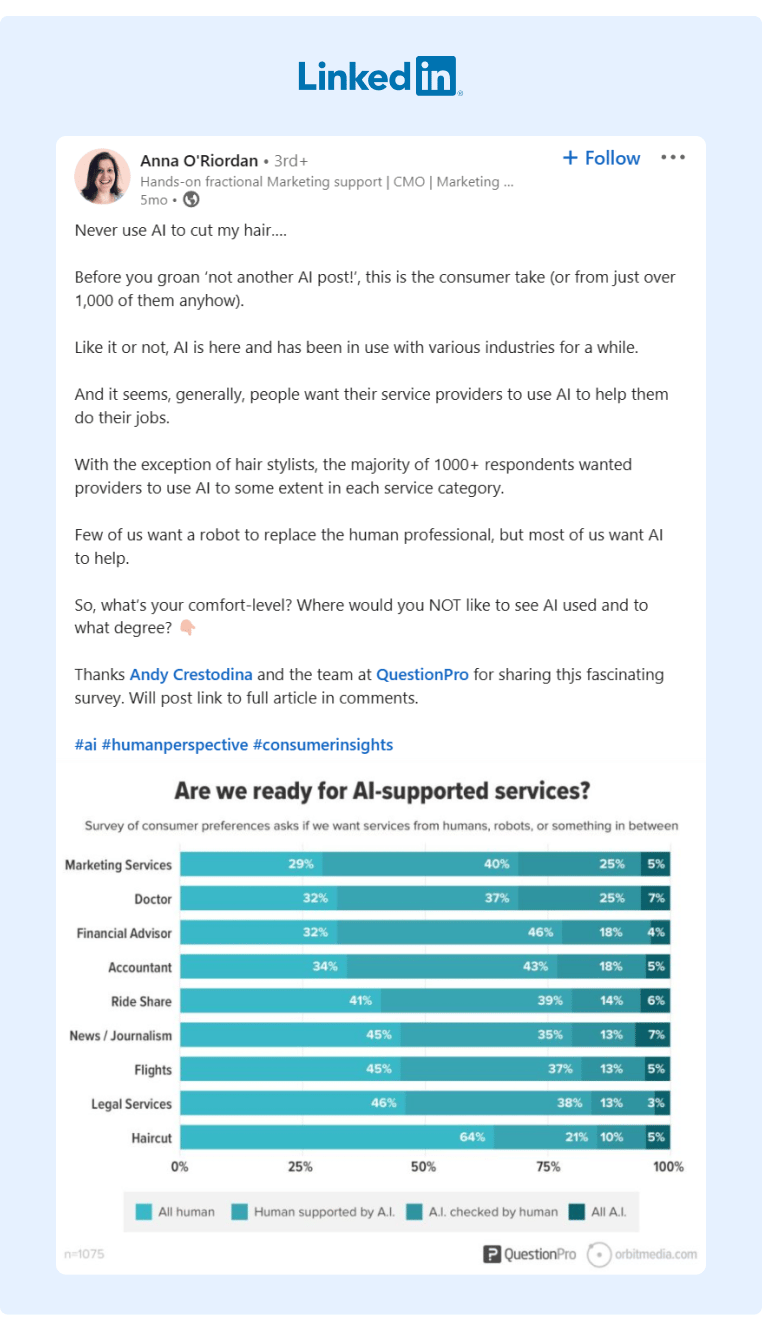
Source: Anna O’Riordan
Given that the influencer traditionally reaches out to the tool for data, your brand may have to craft a compelling pitch for how they can use the data in a way that aligns with their audience.
If you want to increase the likelihood of receiving a “yes” from the influencer, you can offer to organize the raw data for them so that it requires less work on their part.
This strategy can help you quickly earn a lot of high-quality brand awareness from top-tier influencers.
Example #3: Run a Contest
Most B2C brands run social media contests, but few B2B brands effectively leverage contests.
You'll notice that many B2B executives create LinkedIn and X (formerly Twitter) content outlining hacks and processes they use to improve efficiency. Within these posts, they organically mention the tools they use to execute these processes.
Take advantage of this by running a contest where users post how they use your tool to improve efficiency and then offer a prize to the person who generates the most engagement on social media.
For example, here are a handful of people who posted how they use Loom in their strategies:
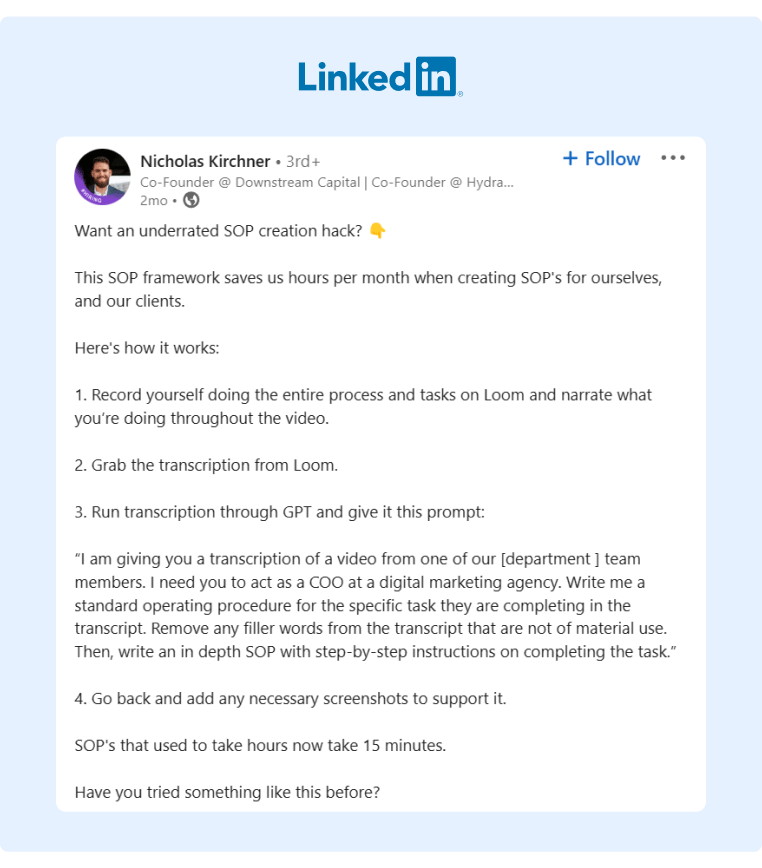
Source: Nicholas Kirchner

Source: Romana Hoekstra
This brand awareness is also highly valuable because it shows how your tool can solve real problems for your ideal customers.
Example #4: Implement a Partner Program
A clever B2B brand awareness strategy is HubSpot's agency partner program.
HubSpot knows that agencies implement their products, so it created a partner program that gives agencies priority support and allows them to negotiate better client rates.
The HubSpot gold status also gives agencies more credibility and access to the HubSpot gold agency directory.
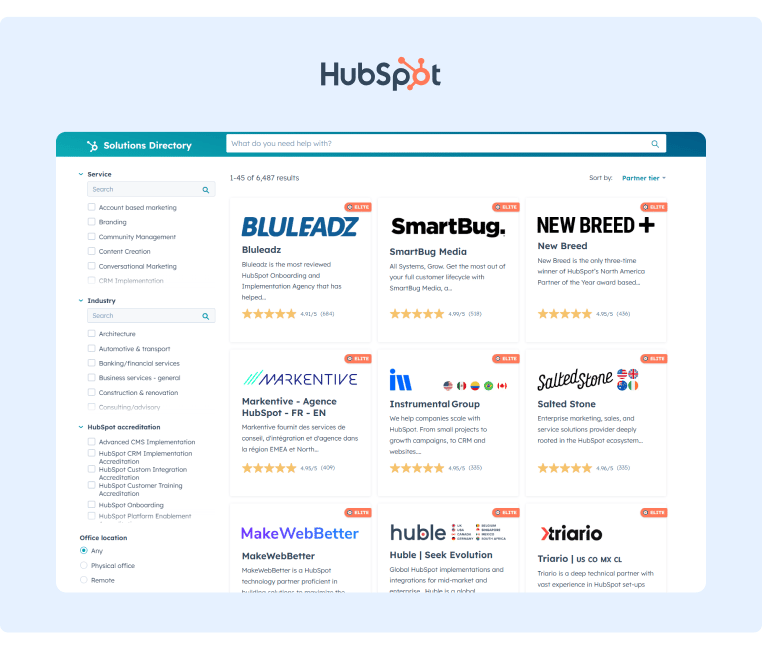
Source: HubSpot
However, the real reason why this program works so well is because agencies must qualify to join the program by generating a minimum amount of business for HubSpot. The program also has several tiers, incentivizing agencies to continuously drive more revenue to HubSpot via their clients.
Therefore, many agencies create marketing materials promoting HubSpot CRM implementation. These marketing materials are outstanding brand awareness for HubSpot because the agencies essentially do the work of promoting the product for them.
For example, this agency is paying to boost a blog post that promotes HubSpot and highlights how it can help users:

Source: Powered by Search
Imagine having a partner team that pays to promote your brand for you!
In addition, people tend to trust recommendations from third-party sources more than content from the brand itself.
As a result, HubSpot receives free, high-quality brand awareness that generates high-quality customers.
Example #5: Consistently Produce Quality Content
Many marketers look for the latest shiny new tactics, but real brand awareness marketing usually lies in steadily publishing high-quality content.
Alex Hormozi's personal brand is an excellent example of this concept in action.
He has an excellent content repurposing and reposting workflow that allows him to exponentially increase content output volume. In fact, his content strategy yields about 80 pieces of content per week. You can learn more about the details of the strategy here:
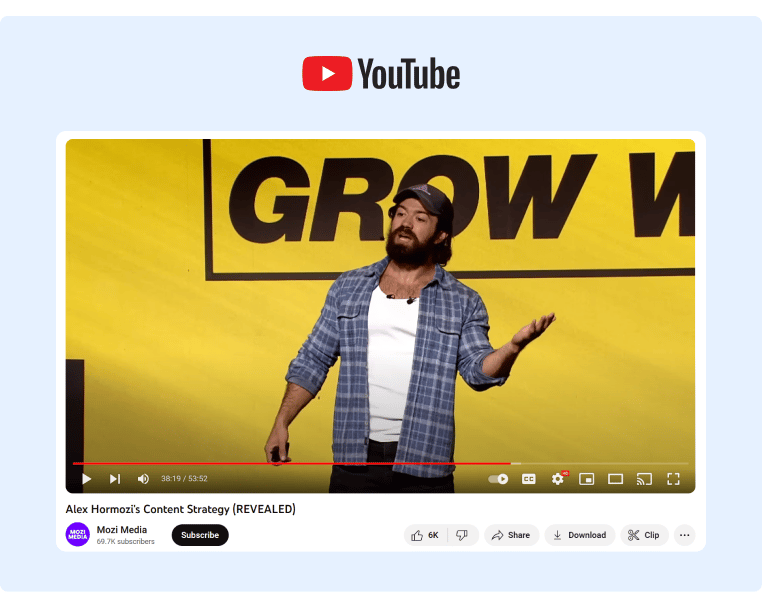
It has clearly worked as searches for his brand jumped from basically zero just a few years ago to nearly 110,000 monthly searches:

Another lesson from this example is that building your executives' personal brands is an excellent brand awareness strategy, as people tend to engage more with content from other people rather than brands.
However, the Hormozi team uses the interest generated from Alex's personal brand to fuel leads and even talent for the portfolio company, Acquisition.com.
So, rather than trying the latest hack or technique, focus on creating a solid content strategy and amplify it as much as possible.
Start Your Brand Awareness Marketing Campaign Today
There are many ways to promote your brand, though the most successful strategies produce long-term, compounding results and require minimal marketing spend.
For these reasons, we find that employee advocacy is one of the most effective brand awareness marketing methods as it leverages employees to promote the brand for the company.
It's highly effective as employees already have a warm audience, making each touchpoint higher quality. It's also much more cost-effective as you don't have to pay your employees for each post. While offering an incentive or bonus can help increase engagement, it's still significantly cheaper than traditional marketing.
Employee advocacy also has many other benefits, like increased employee engagement, higher employee satisfaction, and better talent recruitment.
To learn more about how you can implement an effective employee advocacy program, contact us today.





